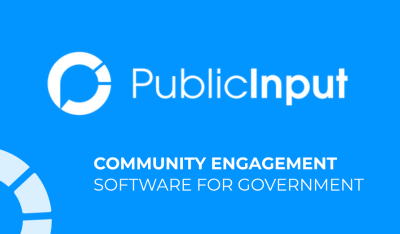
Community-Based Organizations (CBOs) have long played a critical role in connecting people with both resources, and each other. As government agencies of all sizes and shapes push to build stronger relationships with the public, CBOs are finding themselves to be valuable partners in another connection: People and Government.
According to our recently published Annual Resident Survey, CBOs have the potential to broaden their constituents’ awareness and engagement with institutions of government. These organizations, whether they are faith-based, nonprofits, a neighborhood association, or civic group, connect directly with residents and can significantly impact the success of state and local government projects and initiatives.
In this blog post, we’ll explore five strategies for harnessing the power of CBOs to increase public participation among underrepresented stakeholders, and ensure engagement initiatives resonate with the communities they affect.
1. Build a Comprehensive List of Community-Based Organizations
Start by creating a comprehensive list of CBOs relevant to your projects. This list should include primary points of contact information, the organization’s focus areas, its geographic location, and notes on the communities they serve. Maintain this list as a resource across your organization and ensure everyone has access to it by leveraging a shared drive or online database, such as PublicInput. In creating a single system of record for this information, you or your consultants can build on one another’s efforts, and easily identify potential partners for new initiatives while tracking your engagement efforts effectively.
2. Cultivate Mutually Beneficial Relationships
Your relationship with CBOs should be a two-way street. Approaching them with a mindset of empathy first goes a long way towards building long-term, mutually beneficial relationships. Many times these organizations’ constituents harbor deep-seeded sentiments that can be unfavorable based on historic actions of your agency, and acknowledging this history openly is often critical in forging a path forward, together. As you get to know these organizations better, be sure to ask about (and document) their goals and objectives. When your goals are aligned with their own it becomes much easier to define how their help can benefit their community. These partnerships should extend beyond project-specific needs and focus on fostering trust and collaboration over the long-term.
3. Take the Guesswork Out Through Customized Media Kits
Media kits tailored to each organization and separated by initiative not only help CBOs understand what their role entails, but also allow for invaluable insight to the effectiveness of your partnerships. A variety of tools and resources can make up these kits, and CBOs should be provided with these tactics that ensure ease of use by the audiences they serve. This includes both informational campaigns, and engagement initiatives. Consider including unique QR codes that link to websites serving their language needs, text message short codes to ensure simple options, and even printed materials to distribute among their communities. These resources make it easier for CBOs to share project information effectively and for you to know where engagement is coming from.
4. Measure and Share Impact
Build trust with your partners by sharing the effectiveness of their assistance and monitoring participation metrics. Effectiveness should mean both the improvement in representation of their community in your work, and the impact it made on the outcome of the project itself. The unique QR codes provided in your media kits combined with a central system of record will allow you to understand which CBOs are driving engagement and which communities are getting involved as a result. Schedule quarterly times to connect with your CBOs to take the time to thank them, highlight the impact of their efforts, and course correct around any issues that may be developing as you engage with them further. This demonstrates transparency and reinforces the relationship for future partnerships.
5. Embrace Long-Term Partnerships
Building strong relationships with CBOs takes time. Be prepared for challenges and occasional disagreements, and acknowledge that not all initiatives will yield the same level of engagement, but that’s okay. The key is to commit to long-term relationships that foster trust and collaboration even when results are sometimes underwhelming, or when their constituents disagree with your project or initiative. Ultimately, this approach will lead to more meaningful and impactful community involvement.
Community-based organizations are invaluable partners in large-scale initiatives, bridging the gap between government organizations and the communities they serve. By following these five strategies, you can increase public participation, build stronger relationships, and ensure that your projects have a lasting positive impact on the communities they affect. Remember that effective community engagement is an ongoing process that requires dedication and a commitment to transparency and collaboration.
Learn more on how reaching out to residents through community groups can drive increased engagement and trust. Download the PublicInput 2023 Resident Engagement Survey Results.



